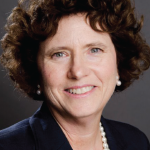Editor’s note: The new Pillar Talk column is developed by the ARHP Executive Committee in an effort to share information about ongoing activities related to our four pillars: Education, Practice, Research and Advocacy.
The ARHP Practice Committee is committed to addressing the current needs and evolving practice opportunities for health professionals working in rheumatology. A key area of focus over the past two years has been expanding our understanding of the different, yet complementary, roles of various members of the interdisciplinary healthcare team.
Interdisciplinary Approach to Care
A decade ago, fewer than eight different types of health professionals were described on the Members of the Rheumatology Health Care Team page on the ACR website. Today, 14 health professionals’ roles, along with the very central role of the patient, make up the described team, with new practitioners being added every year. This speaks to the evolving and important contributions these health professionals make in co-managing patients with rheumatic conditions and in addressing the growing workforce shortage.
To help patients and their families better understand how these various team members work together to provide optimal care, the ARHP Practice Committee has developed case studies to increase understanding of how the team approach works (see The Rheumatologist May 2017). The first case study highlighted six different team members in the care of an adult with newly diagnosed rheumatoid arthritis.
Two other cases are currently under development and include an older adult with knee osteoarthritis and a young patient with juvenile idiopathic arthritis. Each case will link the reader to additional resources on the ACR website, as well as partner organizations, such as the Arthritis Foundation.
To make these cases of additional value to rheumatology professionals, presentation slide decks are being prepared for educational purposes. Many of our members provide instruction to students in entry-level training programs, during clinical placements and to clinical and support staff new to rheumatology practice. These prepared PowerPoint presentation packages will expand on the interdisciplinary case studies and serve as valuable teaching tools for in-class, blended learning and interdisciplinary education. We look forward to highlighting these additional cases and resources in upcoming issues of The Rheumatologist.
The Shrinking Workforce
The rheumatology workforce shortage is a powerful reality. Data from the 2015 ACR/ARHP Workforce Study of Rheumatology Specialists highlighted in the January 2017 and May 2017 issues of The Rheumatologist remind us that there will be a shortage of 3,800 rheumatologists in the U.S. by 2025. One promising solution is to provide specialty training in rheumatology to nurse practitioners (NPs) and physician assistants (PAs).



